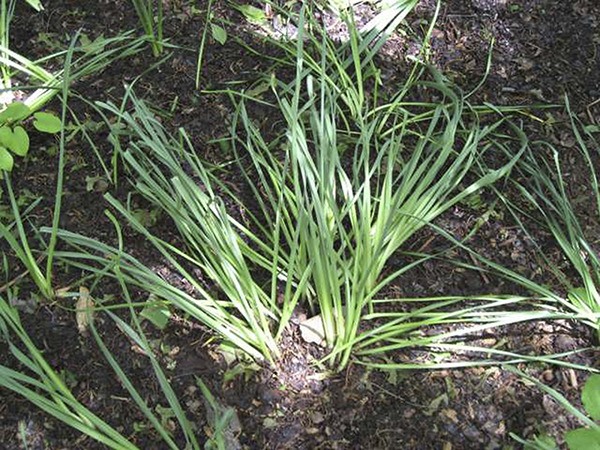Events
Spring Plant Sale — May 17-18 at the Master Gardener Demonstration Garden, 2711 Woodcock Road in Sequim. Saturday hours are 9 a.m.-1 p.m. and Sunday 10 a.m.-noon. The MG Plant Sale is very popular so plan to arrive early for the best selection!
• May 8: Getting Ready for Tomatoes (Judy English)
• May 22: Pepper Culture (Betsy Burlingame)
Brown Bag Seminars — Held the second and fourth Thursdays at noon at the Clallam County Courthouse (commissioners meeting room), 223 E. Fourth St., Port Angeles.
• May 10: Tomatoes! (Judy English)
• May 24: Composting (Betsy Burlingame and Bill Wrobel)
Class Act Seminars on Saturdays 10-11 a.m. at MG Demo Garden, 2711 Woodcock Road, Sequim.
General
May can be the beginning of drier weather. Check hoses, soaker hoses and drip systems for wear and leaks. Water deeply but infrequently as needed. Continue watering new plantings for the first two to three years until they are established. Wait until fall to plant new trees and shrubs to avoid the stress of dry weather. Watch for evidence of pests. Hose aphids off plants with a strong stream of water. Put out slug traps. Attract bees by leaving flowering weeds, especially mustards, in out-of-the-way areas.
Bulbs
Map the location of spring-flowering bulbs as they finish blooming, noting color combinations, to make fall purchases and planting easier. Transplant into the ground bulbs grown in containers after their flowers fade. Plant and fertilize dahlias, begonias, gladioluses, cannas, calla lilies and crocosmia. “Fast acting” liquid fertilizer is recommended. Remove spent bulb seedpods, allowing bulb foliage to mature.
Flowers
Fertilize roses every four to six weeks through July and check for black spot, rust and powdery mildew; remove and discard affected leaves and stems. Secure canes of climbing roses. Pinch back the top three inches of growth from asters, fall mums, bee balm and tall summer phlox. Pinch back fall bloomers around Mother’s Day and again around the 4th of July and summer bloomers only around Mother’s Day. Plant a mix of annuals, perennials and herbs in your garden or in patio containers. Fill containers for summer color.
Shrubs
Shrubs may be slow to recover from winter damage; wait until June before removing plants or pruning out dead wood. Remove flower heads from rhododendrons after blooms fade, being careful not to harm the new buds; deadheading is not necessary but improves appearance and conserves energy which otherwise goes into seed production. Prune evergreen shrubs after they bloom and fertilize as needed. Trim spring-blooming shrubs after bloom.
Trees
Fertilize trees if there are signs of nutrient deficiency. Prune spring-flowering ornamental trees after bloom.
Fruit trees
Top dress fruit trees with fertilizer at the drip-line if last year’s growth was less than 8 to 12 inches. If trees have had past problems with brown rot, scab or mildew, spray them with lime-sulfur or another fungicide according to the product’s label; do not apply fungicides while trees are in bloom. Thin fruit on apple and pear trees 40 to 60 days after full bloom.
Berries
Make sure berry plants get at least one inch of water each week. Fertilize blueberries with ammonium sulfate or elemental sulfur. Tie up new (first year) raspberry canes.
Veggies
Harden off vegetable starts and plant them into the garden by the end of May. Sow cool-season vegetables (beets, chard, lettuce, onions, peas, potatoes, radishes, spinach, carrots and parsnips) every three weeks. Direct sow pole beans, bush beans and corn when soil at planting depth is at least 50 degrees. Delay transplanting tomatoes, peppers, squash and cucumbers until soil temperatures are above 60 degrees. Fertilize garlic and keep it moist. Use row covers to protect spinach, chard and beets from leaf miners. Check cabbage family crops for caterpillars.
Ground covers
Trim foliage of spring-blooming perennials such as candytuft, Arabis, Aubrieta and phlox and divide plants for use in other areas.
Lawns
Check all irrigation systems; set up a simple rain gauge. Water lawns about one inch each week, as either rain or irrigation, not both. Mow every five to seven days. Leave grass clippings on lawn to decompose and return nutrients to the soil. Tolerate some weeds; dig out dandelions to prevent seeding.
Spring-flowering bulb care
1. Remove wilting blooms to conserve the bulb’s energy.
2. Fertilize bulbs after blooming with a 5-10-10 granular fertilizer.
3. Allow bulbs to regenerate for at least 6 weeks after blooming before removing spent foliage. Do not twist or braid foliage.
4. Water bulbs regularly until foliage withers but keep dry during the summer. If beds are irrigated, tulip bulbs are best dug up and stored until fall.
5. Transplant bulbs or dig and divide crowded bulbs after the foliage has died back and replant immediately or store until fall.
6. Remove and discard diseased bulbs. Do not plant new bulbs where you found diseased bulbs.
7. If storing, keep bulbs in a cool place (60-65 degrees) in peat moss, sawdust, perlite, vermiculite or dry sand.
Kamera Muralt and Bill Wrobel are WSU-certified Clallam County Master Gardeners.



